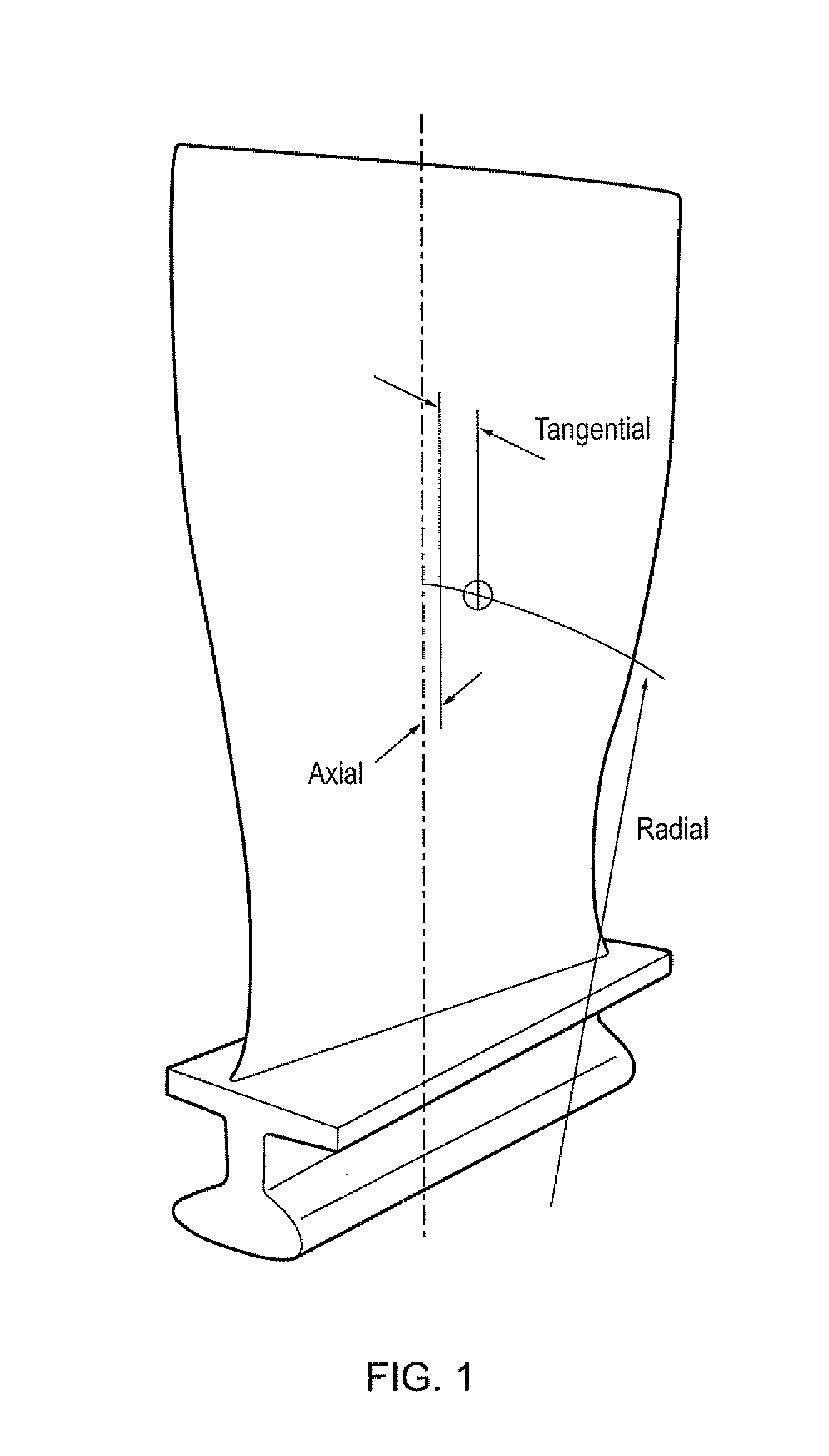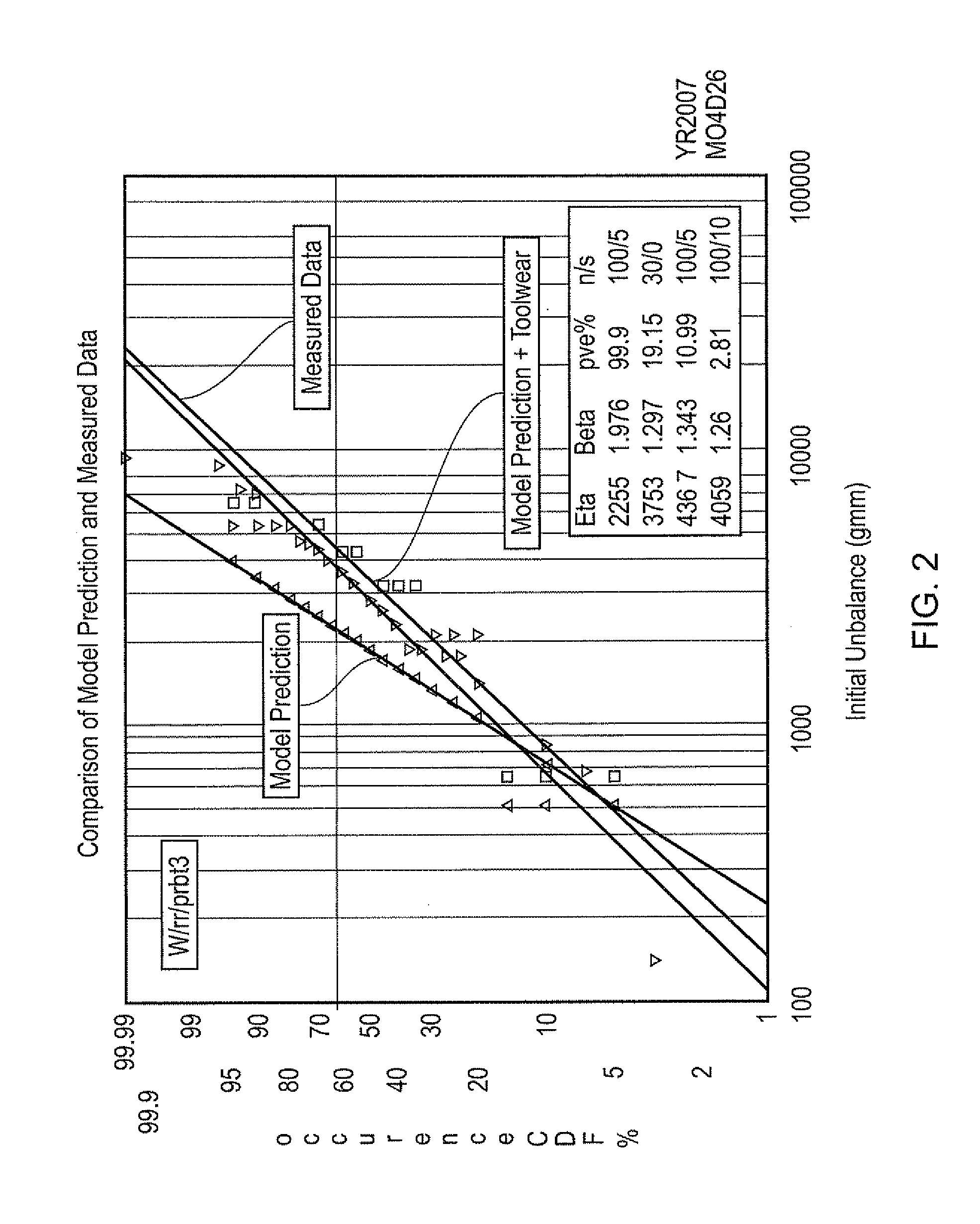Method for predicting initial unbalance in a component
a technology of initial unbalance and component, applied in the direction of mechanical equipment, machines/engines, instruments, etc., can solve the problems of unsatisfactory vibration, damage to the component and the surrounding structure, and the effect of unbalance becoming more pronounced at higher rotational speeds
- Summary
- Abstract
- Description
- Claims
- Application Information
AI Technical Summary
Benefits of technology
Problems solved by technology
Method used
Image
Examples
Embodiment Construction
[0029]In an embodiment of the present invention, a prediction of the initial unbalance in a blisk is made using a statistical approach to provide a more realistic reflection of probable unbalance.
[0030]Firstly, it is assumed that each blade used to form the blisk has a mass moment weight which is selected from a normal distribution centred on the expected mass of the blades. However, to remove the most extreme situations, i.e. the maximum possible unbalance described previously, the blades are assumed to have a maximum variation of ±8% from the expected mass. The selected distribution equates to ±3 standard deviations (a) and thus includes 99.7% of blades.
[0031]The normal distribution of the mass moment weights may be a radial, tangential or axial component of the mass moment, as shown in FIG. 1.
[0032]A simulated blisk is formed by selecting a plurality of blades from the distribution and locating the blades at the blade positions around the blisk. The unbalance effect of each blade...
PUM
 Login to View More
Login to View More Abstract
Description
Claims
Application Information
 Login to View More
Login to View More - R&D
- Intellectual Property
- Life Sciences
- Materials
- Tech Scout
- Unparalleled Data Quality
- Higher Quality Content
- 60% Fewer Hallucinations
Browse by: Latest US Patents, China's latest patents, Technical Efficacy Thesaurus, Application Domain, Technology Topic, Popular Technical Reports.
© 2025 PatSnap. All rights reserved.Legal|Privacy policy|Modern Slavery Act Transparency Statement|Sitemap|About US| Contact US: help@patsnap.com



